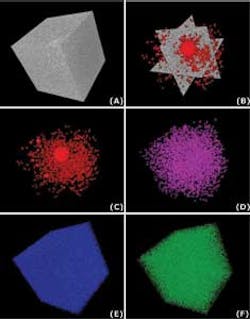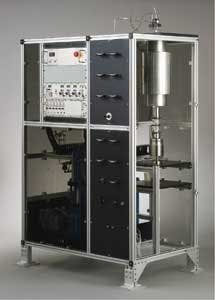Foamed cement may help ensure wellbore integrity in deepwater
Barbara Kutchko
National Energy Technology Laboratory
US Department of Energy
Following the Macondo incident, there was an increased focus on sustained casing pressure in theGulf of Mexico within the offshore industry. As part of that response, the National Energy Technology Laboratory (NETL), the research arm of the US Department of Energy, has engaged in a program to investigate and develop technology to mitigate wellbore integrity issues related to cement failure, especially in deepwater. Research into the characteristics and failure mechanisms of foamed cement has been a primary element of this research program. State-of-the-art technologies are employed in the program.
NETL's multi-scale CT (X-ray computed tomography) imaging facility is equipped to investigate cement properties under in situ conditions that replicate downhole cement environments. This allows researchers to examine core samples under pressure, at temperature, and with fluid flow. CT scanning and other capabilities housed at the laboratory are helping researchers answer fundamental questions about how cement, casing, and subsurface formations interact downhole. Several of these capabilities are highlighted below.
(All images courtesy National Energy Technology Laboratory/US Dept. of Energy.)
Multi-scale CT scanning
To gain an unprecedented view of how foamed cement forms at elevated pressures typical in the subsurface, NETL uses industrial, medical, and micro CT scanners in conjunction with pressure vessels to study in situ cement conditions over a range of pressures and foam qualities. With these capabilities, NETL, and alliance partners Carnegie Mellon University, Pennsylvania State University, University of Pittsburgh, Virginia Polytechnic Institute and State University, and URS Corp., are examining this ubiquitous yet under-studied wellbore material to determine gas bubble stability as cement hardens.
Researchers also have used various software applications to derive statistical relationships related to (for example) foamed cement physical structure. The goal is to determine the conditions required for generating stable cement. In addition, injection properties, fluid-gas ratios, and additives are being examined to determine how they, too, affect stability. Because these experiments are non-destructive, difficult-to-obtain cement core samples are preserved for reuse. Digital images are also archived for future investigations.
Subsurface facilities
NETL's multi-functional subsurface experimental facilities were originally developed for investigations related to the underground injection of CO2 for carbon management, particularly with respect to reservoir storage, caprock sealing capacity, and wellbore cement integrity. NETL and alliance researchers are now using these facilities to conduct offshore and unconventional oil and gas wellbore investigations as well.
By exposing lab- and field-generated samples to downhole conditions, key data is collected on cement stability and performance in various chemical environments. The mechanical properties and behavior of various cement systems, including foamed cement, are being studied. For example, NETL's tri-axial core flow unit measures sonic velocity and resistivity to determine the dynamic behavior of foamed cement in situ.
NETL and partners are also using experimental results to build computer models of subsurface phenomena and processes that can increase the speed and lower the cost of ongoing investigations.
Displaying 1/2 Page 1,2, Next>
View Article as Single page


